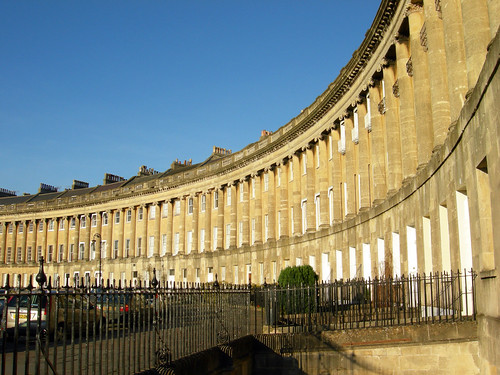"Swindon is not a shithole!"
Literally the first time I had ever heard anyone talk about the town of Swindon, this was the conversation. I heard back on my visit to Bristol as I was leaving the train station. Two guys about my age were having an animated conversation on the state of the town of Swindon. Now, I had heard of Swindon before. I had passed through it by train my first day in England and I remembered that it was home to a locomotive works. I even remember passing rusted out shells of steam locomotives, a ghostly reminder of what was once birthed there. I also knew that the town was famous for its odd roundabouts. Literally, there is a place called the "Magic Roundabout" that has five small roundabouts inside of one large one. Don't believe me, well look for yourself then: http://en.wikipedia.org/wiki/Magic_Roundabout_(Swindon). Swindon was also recently named Disneyworld's sister city. "The Magic Kingdom teaming up with the Tragic Kingdom" said one paper.
I was in Swindon for a rather interesting reason. As I mentioned earlier, Swindon was known for being the main locomotive works for the Great Western Railroad. The works were famous for their locomotives, carriage works and carpentry where even the chairs and benches for station waiting rooms were built. The GWR was, essentially, self-sufficient. Right near the works was the railway village which was where the workers lived in houses built just for them. They also got coal at a cheaper price for living there. Swindon was, basically, a factory town. For me this has a special meaning because I come from a family that worked many generations for the American Locomotive Company in Auburn. Seeing this factory up close would be an interesting personal connection for me.
Luckily enough, Swindon Works is now a museum with a good sized locomotive collection. While not Steamtown in Scranton, PA, the collection is still quite impressive. Not to mention that the process of building a locomotive is well rendered and demonstrated.
Swindon Station. Behind it is National Rail Headquarters.
Brunel and the drive wheels of his first locomotive. They are 8 feet tall.
The offices. Here, O'Malley is getting chewed out for being late...again.
The Carriage Shop
Boiler Shop.
Caerphilly Castle-the finished product. Once the fastest locomotive in the fleet.
In the inspection pit below the locomotive.
The Panier Tank locomotive. Duck from the Thomas series was based on this one.
Lode Star
Locomotive Coffee Pot.
Ditcheat Castle
The museum has an exhibit recreating the boardwalk of Penzence, a favored destination on the GWR. It included old motion picture machines. This one showed the dangers of giving women the vote. It was actually quite funny.
The rest of the works are a shopping mall. Some food courts have a fountain. Others have a bouncy castle...This one has a steam locomotive.
The Railway Worker's Village.
I didn't get to see all of the town. I stuck around the area down by the works, museum and station. From what I could see though, Swindon seems like a nice little town. It has a nice cricket ground and evidently plays host to a fine little football club. It definitely didn't seem as bad as people made it out to be. The next time I write, it will be from Stratford-upon-Avon: The home of William Shakespeare.















Re pannier tank locomotive. Duck is based on the 57xx class locomotive not the 94xx class in the photograph as is clearer if you look at the front end.
ReplyDelete